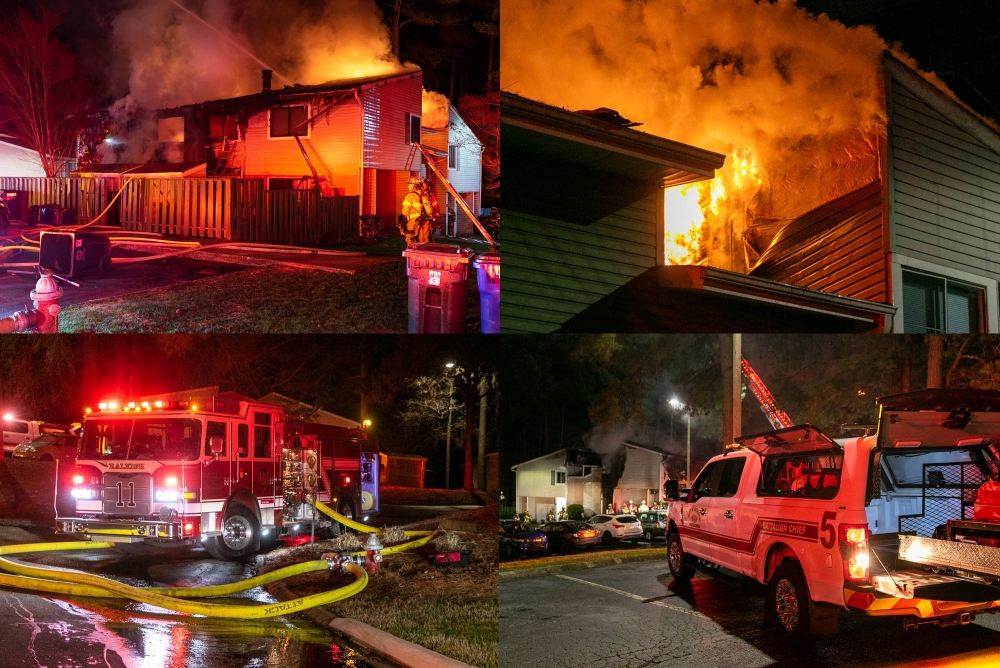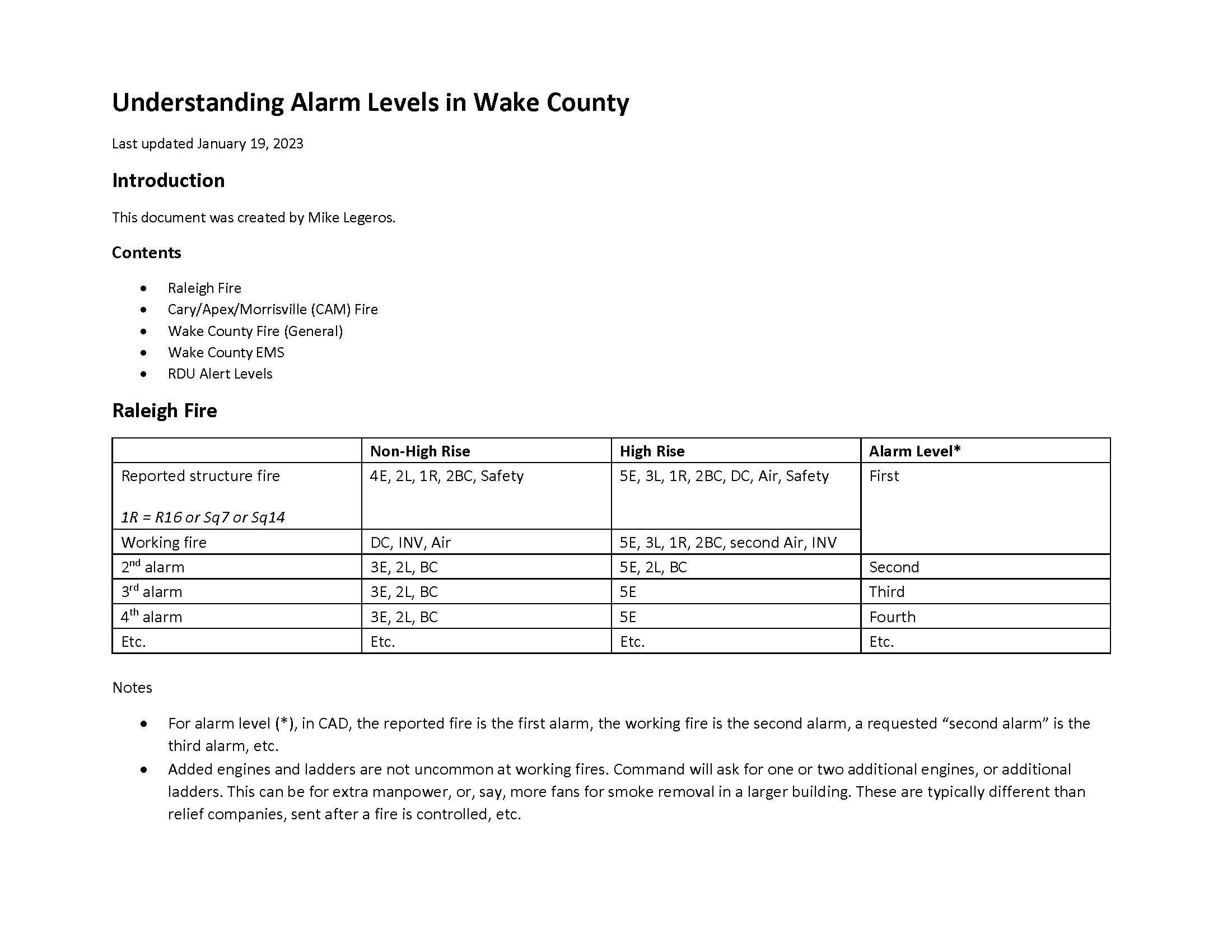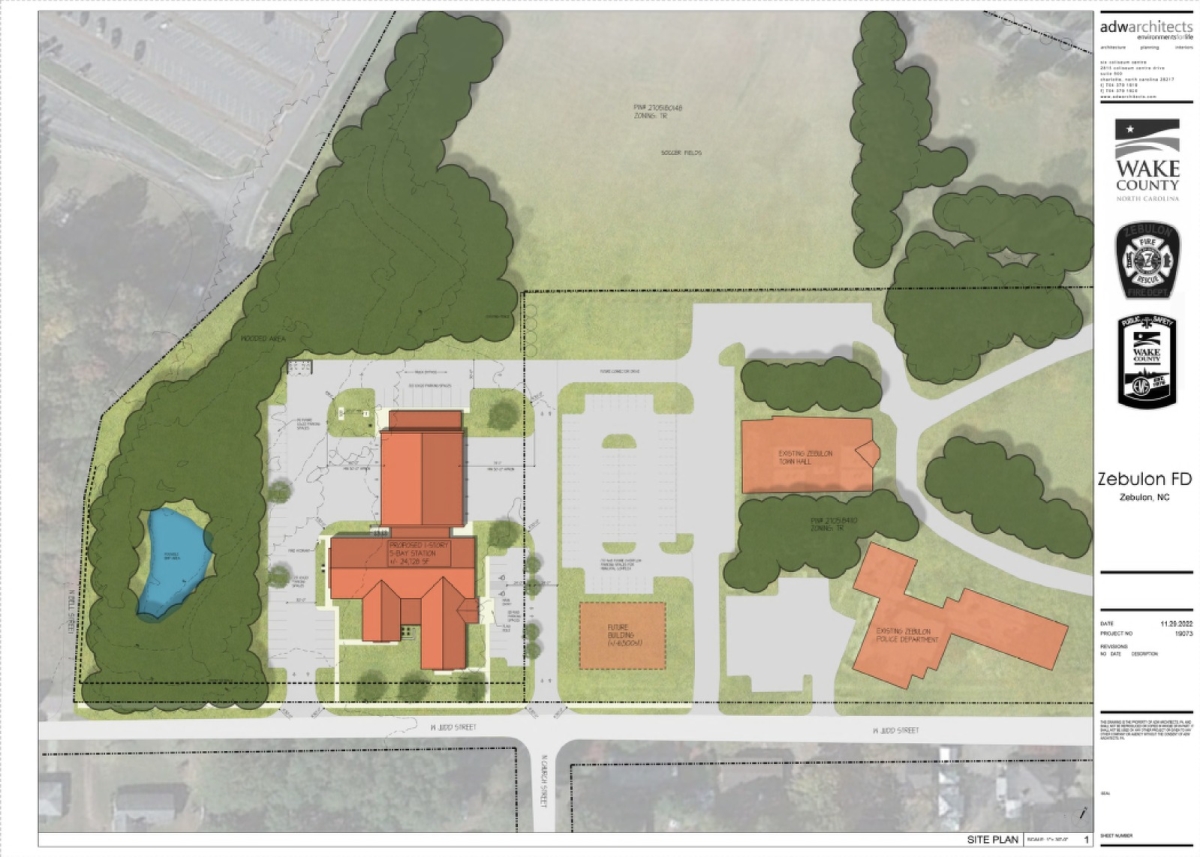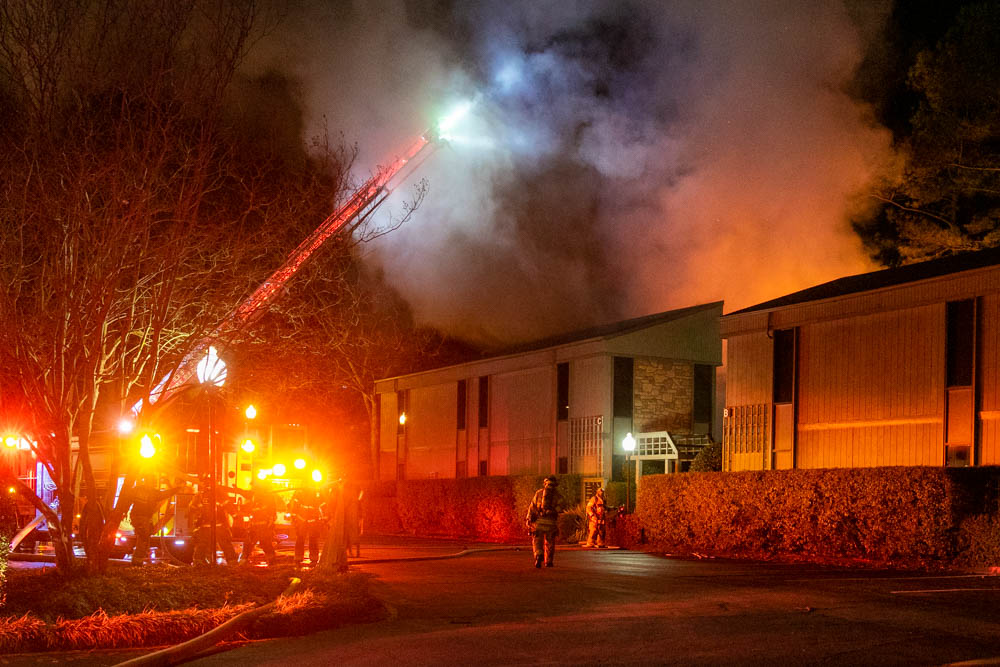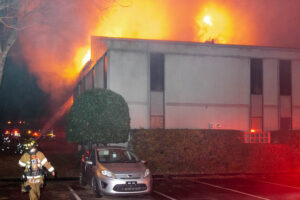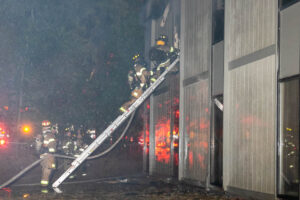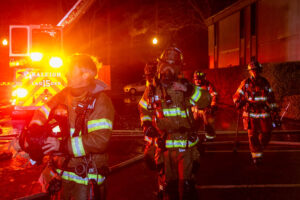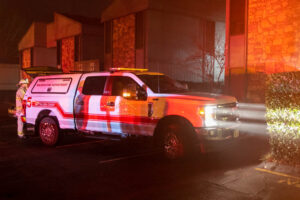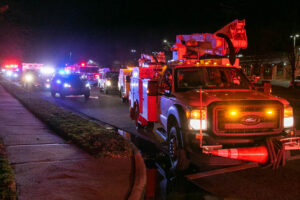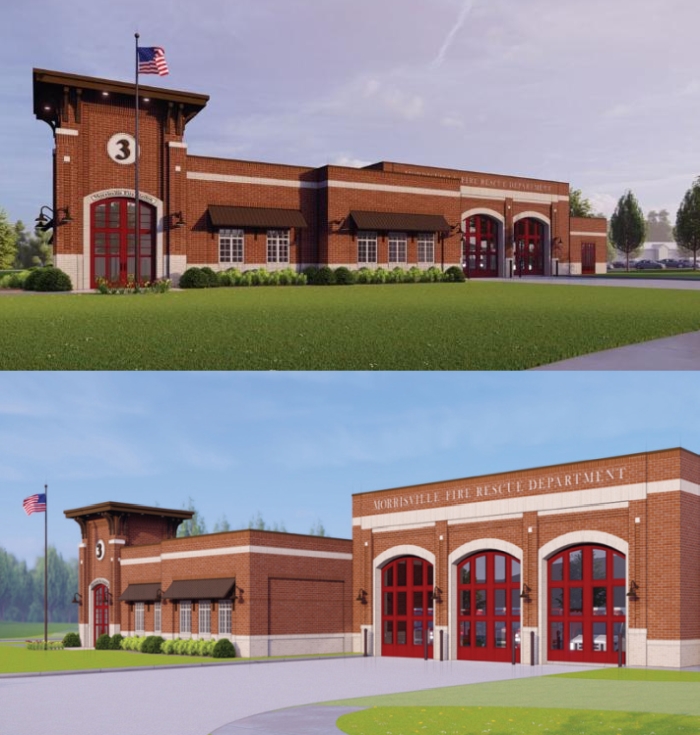See photos by Mike Legeros | Listen to radio traffic
Two alarms (with a third for mayday, then cancelled) were struck in Raleigh on Sunday morning, February 5, 2023. Was the fourth working fire in eight hours. Dispatched 6:12 a.m. for Old Lead Mine Road and Mere Oak Drive. Reported house fire, plus report of people trapped on second floor.
Engine 4 arrived in the area and found heavy smoke. They located the fire building, a two-story, wood-frame apartment building addressed 9401 Prince George Lane. With 10,440 square-feet. Heavy fire found in right rear (A/D) corner on second floor, extending to roof. Also found fire in the rear (C) of the structure.
There were occupants on a balcony/at windows that needed rescue. Plus others inside on second floor. Ground ladders thrown to begin rescue of occupants. Four rescued from both outside and inside, plus additional residents evacuated.
Second alarm requested within five minutes of first unit arrival. Additional EMS alarm(s) also requested.
Interior attack. Ladder 4 later deployed, along with deck gun from Engine 16 and exterior stream(s), as fire conditions worsened on the right side of the structure (A/B) (Ladder 4) and also vented from attic space (C) (Engine 16). Extensive EMS response, with ambulances staged on Old Lead Mine Road.
Continue reading ‘Two Alarms on Prince George Lane’ »

